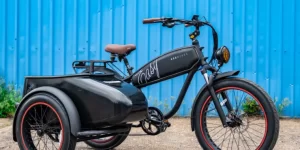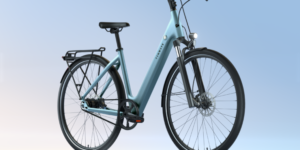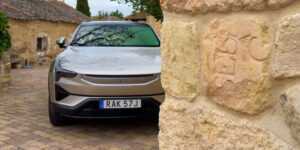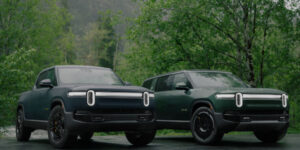
Jonathan Gitlin
I have a theory about electric vehicles, and with a few notable exceptions, it’s this: The cheaper, less powerful version is usually the one to get. Big power outputs and short 0–60 times have been the industry’s go-to, but always with the trade-off being less range and a bigger sticker price. Today’s EV is a good example. It’s the BMW i4 eDrive40, a single-motor version of BMW’s smaller electric fastback sedan. It has taken a while to get some seat time in one, but the wait was worth it, because this is one of the best electric sedans we’ve tested so far.
I’ve driven the BMW i4 a few times now since its launch in 2021, but always the very fast, very powerful, rather expensive i4 M50. Which is fine, but not exciting like the M3. The i4 eDrive40 undercuts the twin-motor, all-wheel drive M50 by more than $10,000—it starts at a more reasonable $57,300 and goes more than 30 miles (48 km) farther on a single charge of the same capacity 84.3 kWh (net) battery pack, with an EPA range of 301 miles (484 km).
BMW made its name on the back of a string of driver-focused, rear-wheel drive sedans, and I had high expectations for the eDrive40 to live up to. With no front motor, there’s less weight on the front axle, and the front wheels just have to worry about steering and braking, not laying down power as well. Less power to put down means smaller wheels, which translates into a better ride and more range, although our test car was equipped with 19-inch wheels (a $600 option), which reduced its range to 283 miles (455 km) compared to the 18-inch option.

Jonathan Gitlin
Open the door via the aero-optimized recessed handle and things look promising as you slip down into the tan-colored seat. The steering wheel’s rim is thinner than you’d find in most modern BMWs, and its multifunction controls are proper buttons. Otherwise, the ergonomics are the same as the more speedy version, with a large double-screen display that stretches across from the A pillar to the center stack running BMW iDrive 8.5. This might be the last version of iDrive to still offer a physical scroll wheel as an input option alongside touchscreens and voice commands, so enjoy it while it lasts.
BMW builds good electric powertrains
At maximum output, the i4’s electrically excited motor can send up to 335 hp (250 kW) and 317 lb-ft (430 Nm) to the rear wheels. And in Sport mode, the first inch of throttle pedal travel delivers more than enough of that torque to jolt your passengers’ heads back into their headrests. Zero to 60 mph (98 km/h) takes 5.5 seconds, which might not sound like much in a 21st-century game of Top Trumps, but it’s more than enough for the real world.
Truth be told, I spent most of my time driving the i4 in Eco Pro, which dials back the power delivery even more than Comfort mode. Still, it never felt slow on the roads in and around Washington, DC. With the transmission set to B, there was a strong one-pedal driving effect; in D, lifting the throttle leaves the car free to coast, only regenerating (up to 116 kW) when you use the brake pedal.
I prefer D for highway driving, as any kind of downhill gradient, however slight, equals a chance to glide along, often gaining a little speed for free in the process. (This is one benefit of an electrically excited motor, which creates no drag on the drivetrain when not energized; the other main benefit is no use of rare-earth materials in the motor construction.)

Jonathan Gitlin
Indeed, 4.1 miles/kWh (15.2 kWh/100 km) was possible without much effort, and over the course of about 2,000 miles (3,200 km) and who knows how many journalists, this particular car had averaged 3.7 miles/kWh (16.8 kWh/100 km). But then, this is BMW’s fifth-generation electric powertrain, so it’s had plenty of time to learn how to make them efficient.
BMW quotes a DC fast-charging time of as little as 31 minutes from 10–80 percent, with charge rates as high as 200 kW. If you set a DC fast charger as your location in the built-in Navigation, the car should precondition the battery pack for optimum fast charging, but there’s also a way to turn that on manually in iDrive.
In practice, I arrived at the charger with 24 percent state of charge and saw a peak of 186 kW shortly after plugging in. As EV drivers will know, charge curves are definitely not linear, particularly past 80 percent SoC, and getting all the way to 88 percent—55.8 kWh in total—took 1 hour and 2 minutes. (Since that was spent enjoying brunch at Mama Chang, conveniently located next to a bank of Electrify America chargers, it was time well spent.) BMW says an AC charge from 0–100 percent SoC takes 8:15 at 11 kW.


























